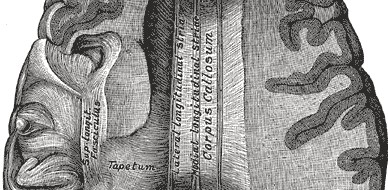Rebekah Carrizales
School of Medicine and Public Health
2020
Essay, personal narrative
Tuesday, September 8th. A “routine” structural ultrasound.
“Squirt” said the ultrasound gel as it turbulently ejected from the packet onto my belly. It was warm; an unexpected comfort. The ultrasound technician rolled her probe from side to side as my husband, E, and I eagerly looked at the monitor.
As a medical student, I thought I would be able to distinguish a few basic structures; on first glance, I had a hard time making heads from tails. The tech was quiet, but noted a strong heartbeat with a heart rate of 148. After a few minutes, she said the amniotic fluid was low and that made it difficult for her to find certain structures.
“Sometimes when the amniotic fluid is low, we need a stronger ultrasound machine to clearly see baby’s structures. I will ask your physician if we should refer you to Meriter for a scan,” she said as she stepped out of the room. Before we knew it, we were ushered into another ultrasound room at Meriter Hospital.
The technician scanned all of the structures, but repeated the heart and abdominal scans on multiple passes. An hour and a half came and went. “Why don’t you take a few laps around the corridor. Sometimes that can help baby move into a more optimal position for visualizing certain structures.” My mind was racing faster than my legs. Soon enough, we were back in the exam room. This time, we were accompanied by a physician and a nurse.
“My name is Dr. G, this is nurse S. I need to tell you about some anomalies we found on your scan,” said the physician in a somber tone. “Your baby’s kidneys weren’t visible on the ultrasound. She is also in the 3rd percentile for size as she is measuring at 18 weeks although she is 21 weeks gestation. There is no amniotic fluid. Babies produce their own amniotic fluid from their urine. Your baby doesn’t have kidneys, so she doesn’t have any amniotic fluid. Lung development in fetuses is maintained by breathing in amniotic fluid. Again, this mechanism isn’t occurring in your baby as she doesn’t have kidneys to produce amniotic fluid. That was a lot of information. What would you like to discuss at this point?”
“Is this a fatal diagnosis?”
“Babies with bilateral renal agenesis who make it to term die shortly after delivery because they can’t breathe due to their underdeveloped lungs. It is a fatal diagnosis.”
Tears rolled down my face and moistened my mask. Little sobs came creeping out of my vocal cords. E’s arms wrapped around my limp body. Time stopped for a moment.
“We have a few options. In the state of Wisconsin, fetuses with structural anomalies can be terminated no later than 21 weeks and 6 days. You are at 21 weeks and 3 days. We can rush an MRI to confirm the diagnosis. This way you can make a decision before the deadline.”
Terminate. What did it matter if she died now, or in a few months? Would she suffer less if I end her life now? She will inevitably suffocate to death after she is delivered. The horror of that scene made termination seem like the more humane option.
“Other options include palliative care support or enrolling in a clinical trial at Mayo Clinic. The trial is investigating the role of amnioinfusions as a potential treatment for babies with low amniotic fluid. They inject saline into the placenta so that baby has fluid to inhale. In theory, this should help the baby’s lungs develop. If she makes it past delivery, she will be placed on dialysis to filter her blood. She will stay in the NICU for awhile while she grows large enough to receive a kidney transplant.”
Hope.
“I need to let you know, there hasn’t been much success getting babies to the point of transplant. Some babies in this trial have survived delivery, but within a few weeks or months, they pass away. There is one documented successful case to make it out of transplant. As far as I know, she is doing well today.”
A precedent upon which to build hope: a baby made it. Our baby could make it.
